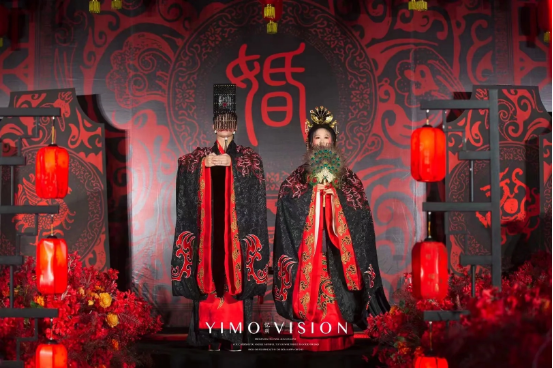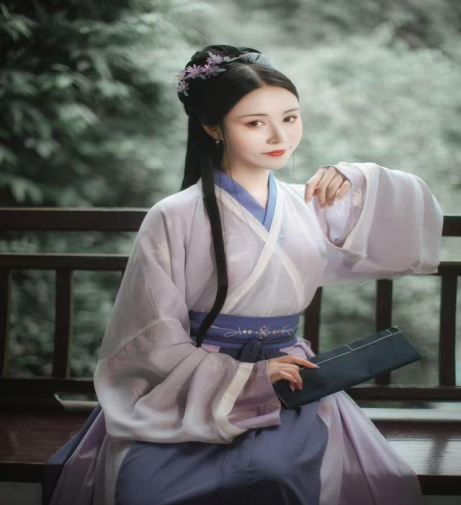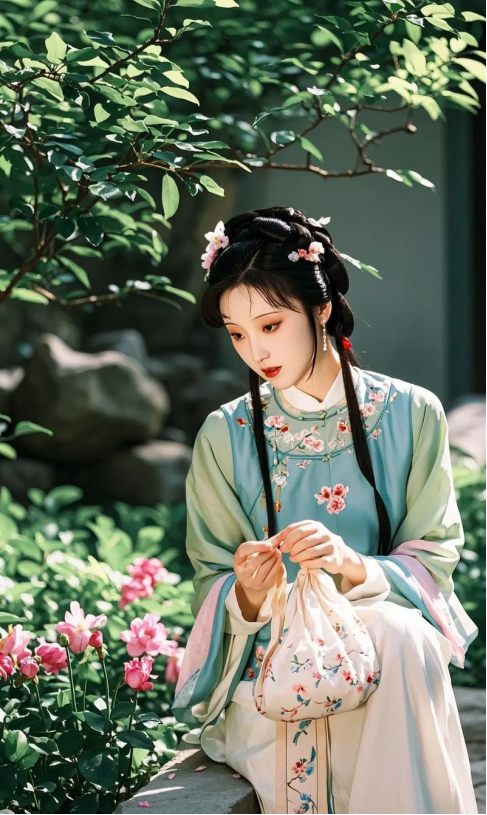We all know that Chinese weddings are imbued with a sense of ceremony, and the wedding dress is an integral part of weddings. Whether in ancient or modern times, wedding dresses are not only filled with symbolic meanings and blessings but also receive significant attention on wedding days. The origin and development of Chinese wedding dresses have a long history, with different eras conveying different meanings.
The Western Zhou Dynasty was the first dynasty to have Chinese wedding dresses
The earliest Chinese wedding dresses appeared during the Western Zhou Dynasty. The history of Chinese wedding attire can be traced back to the Western Zhou period. Records in the “Rites of Zhou”《礼记》译为 The Book of Rites regarding ancient Chinese etiquette and clothing set the standard styles and norms for wedding attire. By incorporating colors into the bride and groom’s wedding clothes, the groom wore black suits symbolizing heaven, while the bride donned a red edged-gown symbolizing earth. This color combination reflected respect for heaven and emulating ancestors, consistent with the Zhou people’s beliefs. Wedding ceremonies were held at dusk, symbolizing the union of yin and yang. This integration of natural imagery, philosophical concepts, and clothing systems laid the foundation for the traditional Chinese wedding dress design tradition, which mimicked the patterns of the sun and moon in the sky and the forms of mountains and rivers on earth, having a profound impact on the evolution of subsequent wedding dress forms.
Once you want to buy chinese hanfu, please check our store online.
Order now!
The Evolution of Chinese Wedding Attire Across Dynasties
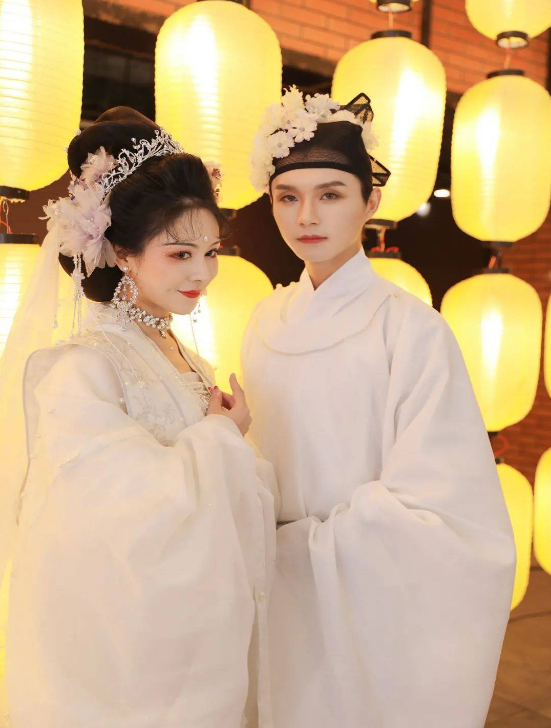
During the Wei, Jin, Northern and Southern Dynasties period, due to the popularity of studying abstruse and profound knowledge, along with frequent exchanges and integrations between different ethnic groups, coupled with continuous wars, people yearned for a peaceful and simple life. White was chosen for its refreshing, natural, and unpretentious feel, transforming the traditional black and red wedding attire into a unique white-dominated style.
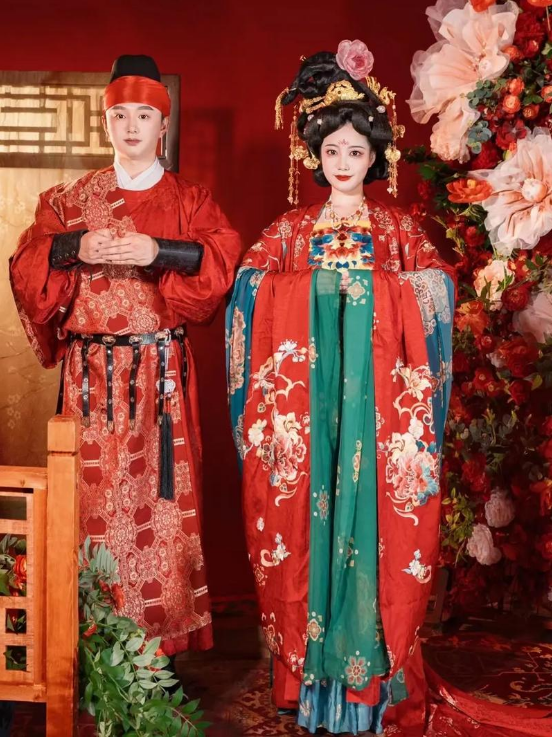
In the prosperous Tang Dynasty, men’s ceremonial attire mainly consisted of maroon round-collar gowns. Brides wore green flower hairpins with several layers of light gauze skirts, accessorized with beautiful jewelry made of gold, silver, and glass. The society of that time deemed the combination of red and green auspicious, which perfectly matched public sentiment and also reflected the openness and inclusiveness of different ethnic cultures.
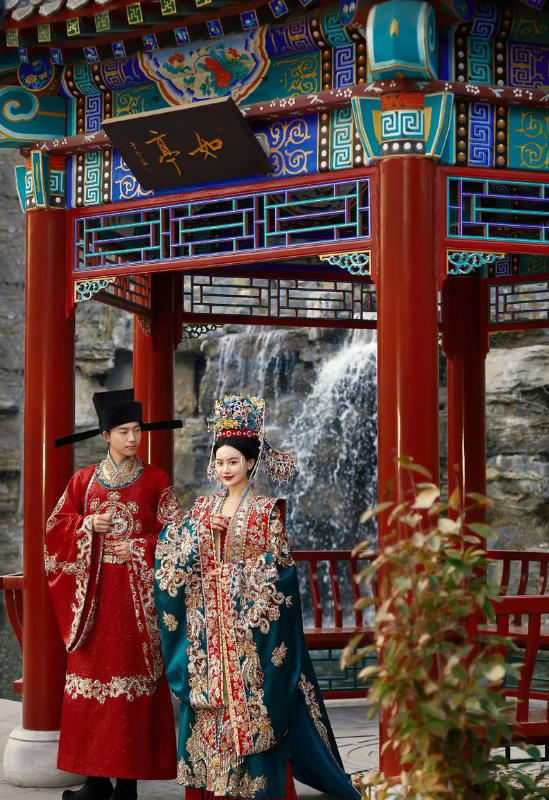
With the rise of Neo-Confucianism in the Song Dynasty, wedding attire inherited from the Tang Dynasty also strengthened the constraints of etiquette, becoming more concise. Women’s clothing mainly consisted of cotton padded jacket, short jacket, and a type of jacket, often paired with Mamianqun or pleated skirt. A belt tied around the waist highlighted the female figure, while head wear favored pearls and flower tattoos. Men wore round-collar gowns with under gown, head wear with flowers, leather belt, and black boots. Compared to the Tang Dynasty, the Song Dynasty’s attire was simpler, and the colors fresher.
The “phoenix crown and rosy silk” (Feng Guan Xia Pei) formally became part of the ritual system in the Ming Dynasty. Gentry women’s phoenix crowns were embellished with pearls and emeralds, while their rosy silk garments featured golden thread embroidered clouds and waves. Common women wore beaded crowns, matching them with large red sleeved shirts and horse-face skirts. Men wore round-collar maroon silk gowns with plain golden belts and black leather boots, dressing like those who had passed the imperial examinations. With further integration of Manchu and Han wedding customs in the Qing Dynasty, Qipao and kasaya became mainstream wedding attire. The unique tailoring and exquisite embroidery of cheongsams showcased women’s gentleness and delicacy; the simple and generous kasayas highlighted men’s spirit and competence, marking a distinctive Qing Dynasty wedding cultural feature.
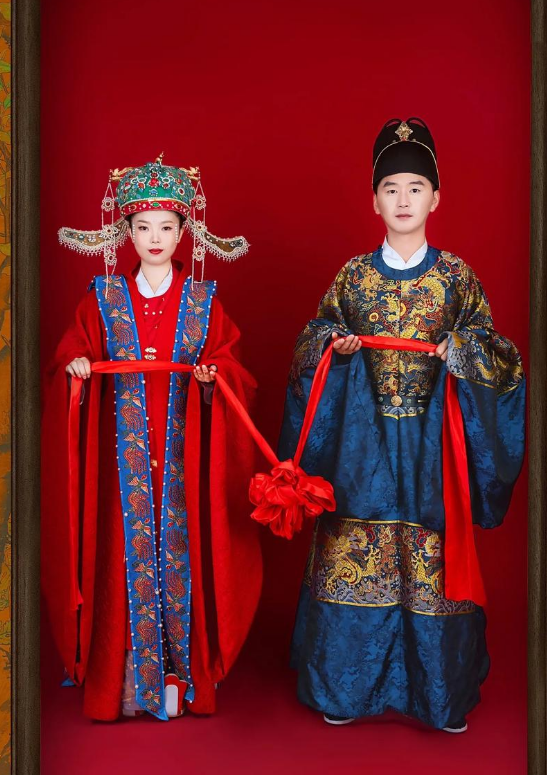

In the 1920s, under the widespread influence of Western culture, Western-style white wedding dresses also gained a foothold in Chinese wedding traditions. Unlike traditional Chinese wedding attire, Western-style wedding dresses exuded romance and elegance, sparking a new fashion trend. Their pure white color symbolized the purity and nobility of love, quickly winning the favor of young Chinese people. Meanwhile, traditional Chinese wedding dresses continued to be inherited due to their profound symbolic connotations. Today, many brides choose both Western-style wedding dresses and traditional Chinese outfits for their weddings. This cultural collision is not only reflected in the clothing but also permeates every aspect of the wedding ceremony, making modern weddings rich in contemporary characteristics and cultural depth.

